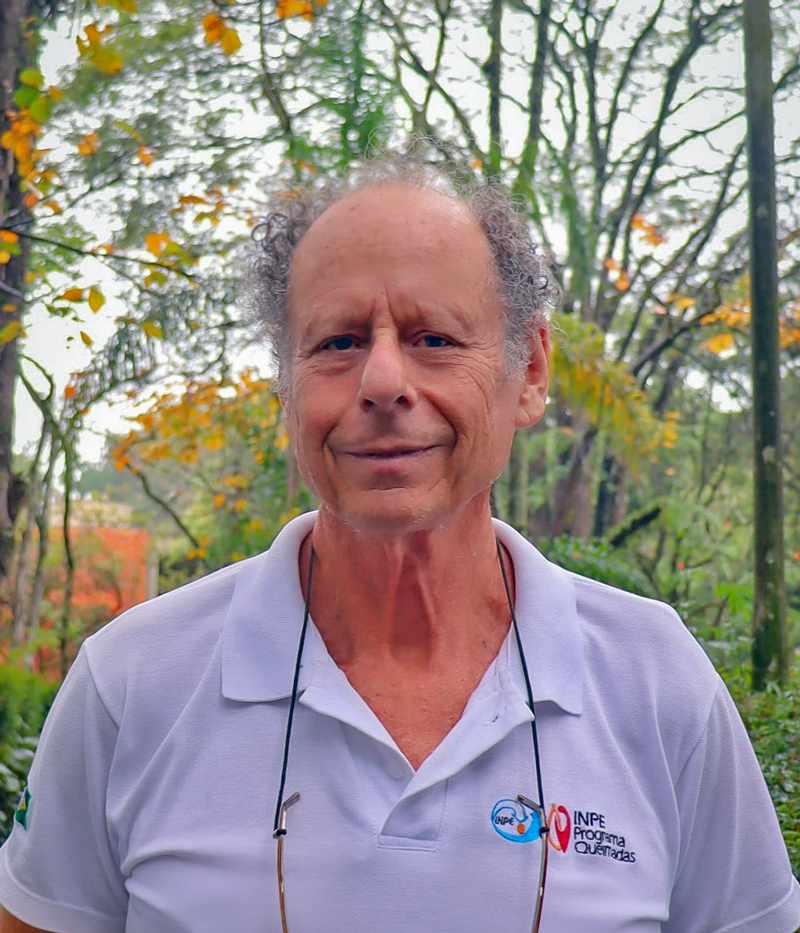
INPESetzer: his work on forest fires encouraged the government to launch fire prevention and firefighting programsINPE
The story of environmental engineer Alberto Waingort Setzer and his contributions to Brazilian science are best told in the context of heat and cold. From 1984 to 2010, he was head of Brazil’s Antarctic Meteorology project and in 1985 he created the fire monitoring program at the Brazilian National Institute for Space Research (INPE), which he ran until 2020. On September 8, Setzer, 72, was playing tennis in Ubatuba, São Paulo, when he suffered a heart attack and died.
Born in São Paulo, Setzer earned his degree in mechanical engineering from the Mauá School of Engineering in 1973, his master’s degree in environmental engineering from the Technion – Israel Institute of Technology in 1977, and his PhD in the same field from Purdue University, USA, in 1982. He joined INPE in 1977 and spent his entire career at the institute.
In the summer of 1984 and 1985, he carried out the first of 25 expeditions to the Comandante Ferraz Antarctic Station. His objective was to install a meteorology system for the Brazilian Antarctic Program, which began operating in 1986, supporting field research teams at the station and on the Brazilian Navy’s oceanographic research ships Barão de Teffé and Ary Rongel. “Between 1995 and 2002 I went on several field missions in Antarctica and it was Alberto who updated me with the weather forecast or any news relevant to my team’s movement on the ice. He created a meteorological research network that is internationally recognized for its quality,” says Francisco Eliseu Aquino, a climatologist at the Federal University of Rio Grande do Sul (UFRGS).
One of the characteristics most highlighted by those who knew him was his concern for social issues. “Alberto decided to get involved in the issue of wildfires because he saw that it was a really important topic for Brazil,” says physicist Ricardo Galvão, president of the Brazilian National Council for Scientific and Technological Development (CNPq) and general director of INPE between 2016 and 2019. In 1985, during a joint project between INPE and NASA, Setzer flew over the Amazon to investigate the chemical composition of what was thought to be the purest air on the planet. The researchers were surprised, however, to record high levels of air pollution. Setzer then requested images from the USA’s NOAA-9 weather satellite, which showed hot spots in the south of the Amazon biome. It was the first scientific evidence that wildfires occurred at such magnitude that they were capable of changing the composition of the atmosphere and affecting the planet’s climate on a large scale.
Confirming the extent of the impact was why he chose to lead the Wildfire Satellite Monitoring Project. The program was started in September 1987 and shone a global spotlight on the huge number of fires occurring in Brazil, forcing the Brazilian government to launch the Our Nature Ecological Package in 1988, in addition to the Forest Fire Prevention and Combat Commission. In 1989, the Brazilian Institute of the Environment and Renewable Natural Resources (IBAMA) and the Forest Fire Prevention and Combat System were born.
Setzer was in charge of the Wildfire Program for 35 years. According to Galvão, INPE’s decision to make satellite images freely available in 2004, a move that was supported by Setzer, had a huge impact. The images are used by government agencies, nongovernmental organizations, and private companies. “It was only after Brazil began sharing their images that NASA and the European Space Agency followed suit.”
Renata Libonati, a meteorologist from the Federal University of Rio de Janeiro (UFRJ), says that Setzer was highly respected by his peers. “For 20 years I have been traveling all over the world to scientific conferences and meetings in the field of remote fire sensing, in which Alberto was a pioneer, and there is nowhere I have been that people didn’t know him and his work,” she says.
Alberto Setzer leaves his wife, Adriana Perst Mattedi, and one daughter, Joana Setzer.
Republish
